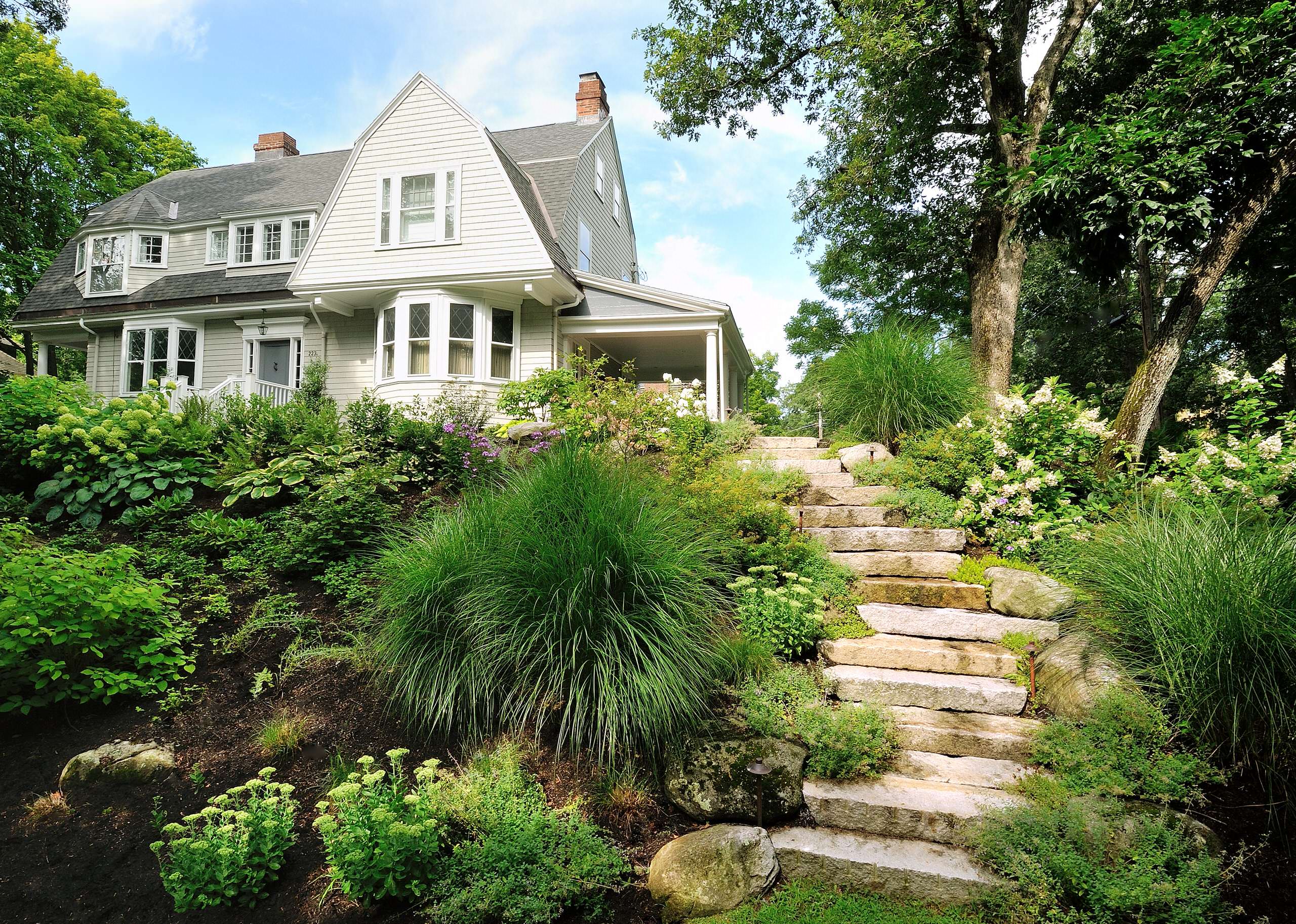Transform tricky slopes using Steep hill landscaping techniques.
Release Your Imagination With Distinct Styles in Steep Hillside Landscape Design for a Beautiful Lawn
Steep hillside landscape design offers both tests and chances for creative expression in outdoor layout. By utilizing cutting-edge terracing methods and picking suitable indigenous plants, one can not just support the dirt but likewise enhance the visual allure of a sloped backyard.
Understanding Steep Hill Landscaping
Just how does one effectively browse the difficulties of high hillside landscape design? Steep hillsides existing details challenges, including soil disintegration, drainage concerns, and ease of access worries.
One of the main considerations in steep hill landscaping is dirt stability. Including ground cover plants, using compost, or installing retaining walls can substantially minimize disintegration while improving the aesthetic appeal of the landscape.
Steep areas can prevent movement, making it vital to plan paths or steps that help with easy navigating. Ultimately, recognizing the details of high hillside landscaping is key to achieving a harmonious and sustainable atmosphere.
Cutting-edge Terracing Techniques
In the world of high hillside landscape design, cutting-edge terracing methods provide an effective option to manage difficult slopes while enhancing the landscape's beauty. By creating a collection of stepped levels, these methods not only support dirt yet also produce aesthetically appealing rooms that can be made use of for different functions.

Another innovative technique includes making use of modular systems, which permit flexibility in design and convenience of installment. These pre-manufactured systems can be conveniently assembled to form terraces that suit different inclines and dirt kinds.
Additionally, increased beds can be incorporated right into terraced landscapes, providing chances for horticulture while improving the visual rate of interest of the backyard (Steep hill landscaping). By incorporating these methods attentively, homeowners can accomplish an unified equilibrium between performance and aesthetic appeals in their steep hillside landscapes
Choosing the Right Plant Kingdoms
Selecting the right plants for steep hillside landscapes is fundamental to creating a lasting and aesthetically appealing setting. The distinct difficulties positioned by sloped terrains need mindful consideration of plant qualities, including root systems, water retention, and growth habits. Native plants are commonly the most effective selection, as they are adapted to local problems, require less upkeep, and supply environment for local wildlife.
When picking plants, prioritize those with deep root systems, such as turfs and perennials, which can help maintain the redirected here soil and protect against disintegration. Ground covers like sneaking thyme and sedum not only supply aesthetic appeal yet also offer to hold the dirt in position - Steep hill landscaping. Furthermore, consider the water drainage patterns of the hillside; plants that thrive in well-drained soil will do better in these problems
Integrating a selection of heights and textures can boost aesthetic interest while making certain that plants match each various other in terms of light and water needs. Seasonal considerations must affect your options-- picking plants that provide year-round rate of interest will produce a vibrant landscape that develops with the periods. Thoughtful plant option is essential to attaining both elegance and performance in high hillside landscaping.
Creative Pathways and Characteristics

Take into consideration utilizing natural materials such as rock, crushed rock, or reclaimed helpful site wood to develop look these up paths that mix perfectly with the landscape. Bent pathways can soften the harsh lines of steep slopes, while terraced styles can assist reduce disintegration and give added planting areas. Including actions made from wood or rock can promote motion with uneven surface, making sure security while including aesthetic interest.
Along with pathways, unique attributes such as ornamental boulders, sculptures, or water aspects can work as centerpieces, drawing the eye and adding personality to the landscape. Illumination along pathways not only enhances security but additionally creates an enchanting atmosphere during nights, inviting exploration.
Moreover, integrating seating locations within the landscape offers a room for relaxation and reflection, enabling homeowners to completely value the charm of their environments. By thoughtfully integrating these components, steep hill landscapes can come to be dynamic, interesting environments that provide both capability and artistry.
Upkeep Tips for Sloped Yards
Efficient upkeep is important for protecting the elegance and functionality of sloped lawns. As a result of their unique topography, these landscapes call for specific techniques to guarantee their long life and visual appeal.
First and primary, correct water drainage is vital. Consistently inspect rain gutters and downspouts to stop water from merging on the incline, which can lead to erosion. Executing a system of swales or French drains can successfully reroute excess water.
Secondly, greenery plays a vital duty in stabilizing slopes. Choose ingrained plants that can hold the dirt in position, and routinely monitor their health. During dry spells, ensure sufficient watering, but beware of overwatering, which can intensify erosion.
Mulching is another effective upkeep strategy. Applying natural compost not just saves wetness but likewise reduces weeds that could otherwise undercut the dirt.
Finally, routine evaluations for signs of erosion or soil activity are crucial. If recognized early, removal initiatives such as re-planting or setting up keeping walls can protect against more damages. By executing these maintenance pointers, house owners can take pleasure in a dynamic and resilient sloped backyard for many years to find.
Conclusion
In verdict, high hill landscape design provides an opportunity to change difficult terrains right into visually captivating spaces. Via ingenious terracing techniques, the choice of proper indigenous plants, and the incorporation of creative pathways and functions, an unified and welcoming setting can be achieved. Additionally, applying effective maintenance techniques makes sure the long life and sustainability of the landscape. Inevitably, a properly designed steep hillside landscape not just improves aesthetic charm but likewise promotes ecological equilibrium and soil stability.